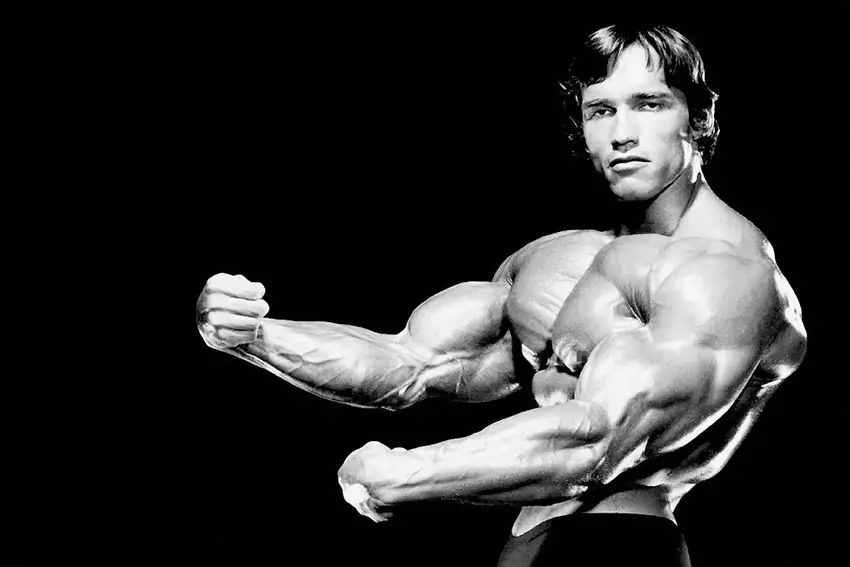
Creatine Before or After Workout? 3 BEST Creatine of 2022

Creatine is widely used as an athletic supplement, but its optimal timing is debated. Should you take creatine before or after workout?
Creatine supplementation after exercise has been shown to boost both lean muscle mass and strength. Since it is rapidly absorbed by the body, taking it before exercise will maximise its use during exercise.
Since creatine is one of the most popular supplements among gym-goers wanting to bulk up their physique, this article will discuss when the most beneficial time to take creatine is along with the best selling creatine products on Amazon.
Creatine: What Is It?
Creatine, a chemical produced naturally in the body, is used to aid release energy during anaerobic activity. There is a high concentration of creatine in skeletal muscle. Adenosine triphosphate (ATP) is one of the body’s primary sources of cellular energy, and it plays a critical role in releasing energy from the cell’s reserves and rebuilding ATP (ATP).
Creatine is mostly synthesized by the liver and kidneys, with about half coming from animal sources in the diet. Low creatine levels have been linked to a drop in performance which is why it should be used both before and after exercise.
Approximately 1% to 2% of our skeletal muscle creatine reserves are lost in urine each day (as a metabolic by-product), thus we require about 1.3 to 1.7 g of creatine per day to keep our skeletal muscle creatine stores at a constant level. Don’t worry however; our bodies can produce creatine and other amino acids from meals.
What Are the Benefits of Creatine?
Creatine is a supplement that may assist improve your performance during short-duration, high-intensity workouts. These types of workouts include power exercises and heavy lifting.
Creatine will, in most cases, have an effect on your endurance, strength, and power. The average American consumes between 1 and 2 grammes of creatine per day, the majority of which comes from red meat and some types of seafood.
This quantity accounts for around 60–80 percent of the maximum amount of creatine that the muscles are capable of storing. It is for this reason that taking a creatine supplement in the form of creatine monohydrate is beneficial.
7 known benefits of taking creatine daily:
- Increases energy production in muscle cells.
- Helps maintain muscular function in many other ways as well.
- Increases the effectiveness of high-intensity workouts.
- Accelerates Muscle Growth.
- Could be useful in treating Parkinson’s
- Possible protection against other neurological disorders.
- May aid in reducing blood sugar levels and combating diabetes.
Creatine Before or After Workout?
Supplementing with creatine before, during, or after exercise has also been shown to have positive effects. When is the right time to take creatine?
Taking Creatine After A Workout
The amount of creatine that is consumed via food is not always sufficient to maximise the amount of creatine that is stored in the body. Because of this, one of the most effective times to consume creatine is after an exercise in the form of a supplement. This may assist in muscular recovery by replacing what was used during your workout, and it also helps preserve muscle reserves in optimal condition and ready for the next time you exercise.
When taken alongside carbohydrates after an exercise, creatine has also been proven to help increase glycogen storage in the muscles, which is a benefit that may be very useful for athletes (more than carbohydrates alone). Glycogen is energy that is stored in the muscles to be used at a later time. This improves performance and delays the onset of weariness. It has also been demonstrated that creatine helps decrease inflammation, which can benefit in the healing process after an accident. In addition, creatine causes an increase in intracellular fluid, which might give the appearance that the muscles are fuller.
Taking Creatine Before A Workout
Supplementation is an excellent method for increasing muscle reserves since it is difficult to get all of the creatine one needs from a natural diet. If this is your first time supplementing, the most effective strategy to maximise these reserves is to take creatine (about 5 grammes, or 0.3 grammes per kilogramme of body weight) four times a day over a period of five to seven days.
When you have reached the optimal amount of creatine reserves for your body, a daily dose of 3-10g (depending on the size of your body) may be sufficient to sustain the higher level you prefer. Individuals who are vegan or vegetarian, or who have a higher body mass, may need higher dosages of creatine before working out in order to get the most out of their stockpiles.
3 Best Creatine Supplements
These are the best Creatine products trending on Amazon right now.
1. Vegan Creatine Monohydrate (Bulk Suppliments)

Description
- Creatine is a popular bodybuilding supplement. Creatine monohydrate powder may help you gain lean muscle mass. Micronized Creatine Powder is a popular supplement for increasing body mass and strength.
- Micronized creatine monohydrate powder boosts performance in short-duration, high-intensity exercises like weightlifting by boosting muscle ATP. Creatine powder is a bodybuilding supplement that boosts strength. Creatine lowers recovery time between sessions, enabling you to push harder and longer. *
- Many individuals don’t drink enough micronized creatine monohydrate in their diet (especially vegetarians). Creatine powder energises all cells, including brain cells, and supports brain function*.
- Our creatine powder is micronized, making it easier for the body to absorb. Add it to a drink or shake. Flavorless, without fillers, additives, or artificial flavors. It’s a handy everyday addition.
- BulkSupplements’ goods are created according to cGMP standards to assure the best quality throughout production, packing, labeling, and holding. Our in-house lab allows us to evaluate items at numerous stages of manufacture. Third-party testing ensures compliance, standards, and consistency.
2. Creatine Monohydrate Capsules (ON)

Description
- Pills that are simple to take. Suitable for use both before and after exercise.
- Every single serve 2.5 grammes of pure creatine monohydrate.
- Tablets for your convenience. Taking creatine in a convenient 2 cap serving size eliminates the need to mix a powder into a drink.
- When paired with high intensity exercise, helps increase muscular growth, strength, and power
- Bottles of 100, 200, and 300 capsules available right now.
Product Warning: Overheating or direct sunlight might cause the product to melt or become damaged. Therefore, it is essential that the buyer be present at the time of product delivery.
3. Creatine Monohydrate (Nutricost)

Description
- Creatine Monohydrate with a High Degree of Micronization and better quality.
- Each Bottle Contains 500 Grams of Creatine Monohydrate and Each Serving Contains 5 Grams of Creatine Monohydrate (Scoop Included).
- Get the Strength and Endurance You’ve Been Working For.
- Our Creatine Monohydrate offers you an extremely high-quality product at a price that is a fraction of what it would cost you to purchase many other companies’ products.
Additional Questions
If you are still unsure as to why you should include creatine on your list of daily supplements, the frequently asked questions can assist you in removing any uncertainties that you may have.
Should Under-18s Avoid Creatine?.
Critics say young people shouldn’t use creatine. This is a legal precaution rather than scientific proof why teens shouldn’t consume creatine.
Many investigations, including those with high creatine dosages, have been undertaken in young and elderly populations. In these trials, no negative impacts were found, but health or performance gains were.
At the prescribed amount, creatine doesn’t represent a health concern to those under 18 and is a feasible tool for teenage athletes to increase training adaptations and minimise injury risk.
Is Creatine Safe?
Short or long-term creatine supplementation has no harmful consequences. People with different ailments report performance and/or health advantages.
Creatine only causes weight gain. For most people seeking to bulk up, this isn’t a side effect. Several recent systematic evaluations debunk creatine safety misconceptions. Creatine doesn’t cause muscular injury, dehydration, cramps, stomach discomfort, or renal damage.
Even 30g of creatine everyday for 5 years didn’t cause renal damage. These health studies show that creatine monohydrate is safe, well-tolerated, and may be used throughout a person’s life to enhance growth, performance, and overall health.
Why Is Creatine Important?
The bulk of creatine retained in muscle is phosphocreatine, creatine and phosphate combined. This molecule releases energy when hydrolyzed. This energy is utilised to mix ATP, our high-intensity training fuel.
More phosphocreatine in the muscle implies more ATP, particularly during intense activity. Creatine supplementation (or boosting phosphocreatine storage) improves training performance and responses. Creatine may also aid post-training recovery, prevent injuries, maintain body temperature, and protect the nervous system during concussions.
Does It Make You Watery?
Nope! Creatine’s greatest misconception. Yes, creatine causes water weight gain. Water retention among muscle cells gives them a fuller, rounder look. As long as water isn’t kept outside the muscle cell (extracellularly), you won’t “appear” watery or blurred.
Why Is Creatine Monohydrate The Best?
Creatine nitrate, ethyl ester, buffered creatine, and citrate are on the market. If these variations can outperform standard creatine monohydrates is unknown.
To be better, these versions must retain more creatine in the muscle or degrade less. However, no research supports these assertions. Creatine monohydrate, on the other hand, is cheaper and more effective than its variations, so stay with it.
How Do I Take Creatine?
A average day of eating may provide 1-2g of creatine. Under these conditions, creatine saturation is only 60-80%. Nonetheless, consuming 5g of creatine monohydrate four times a day for 5-7 days is the most effective strategy to enhance phosphocreatine for high-intensity energy generation. After this loading period, muscular creatine reserves will be full and may be maintained with 1 serving of 3-5g daily. Loading isn’t necessary to obtain muscle saturation. It takes longer to attain muscle saturation on 5g of creatine daily (or the maintenance dosage).
Research shows consuming creatine with glucose or protein might boost muscle creatine retention. Studies reveal it takes 4 weeks without creatine supplementation before creatine reserves return to baseline. If you want a thorough explanation of this topic, watch the video below.
Take Home Message
The best time to take creatine is after exercise, according to studies. Lean muscular mass is best gained when paired with a resistance training regimen. It may be most effective when consumed with a post-workout meal heavy in carbohydrates or a combination of carbohydrates and protein.
Creatine supplementation before and during exercise has similar positive effects. Taking it on a regular basis is more essential than taking it at the exact right moment, so choose a time of day when you will be most likely to remember to take it.
Incorporating creatine into your workout won’t magically transform you into a hulk overnight. An effective exercise program is still required. If you want to work out like a superhero without spending any money, just click here for instant access to the regimen. In addition, you may want to sign up for our newsletter to get updates about our upcoming fitness-related articles.
Keep grinding gym bros!














